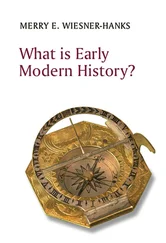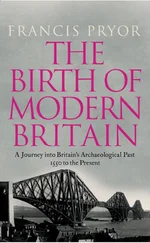R. Nisbet Bain - The Cambridge Modern History
Здесь есть возможность читать онлайн «R. Nisbet Bain - The Cambridge Modern History» — ознакомительный отрывок электронной книги совершенно бесплатно, а после прочтения отрывка купить полную версию. В некоторых случаях можно слушать аудио, скачать через торрент в формате fb2 и присутствует краткое содержание. Жанр: unrecognised, на английском языке. Описание произведения, (предисловие) а так же отзывы посетителей доступны на портале библиотеки ЛибКат.
- Название:The Cambridge Modern History
- Автор:
- Жанр:
- Год:неизвестен
- ISBN:нет данных
- Рейтинг книги:4 / 5. Голосов: 1
-
Избранное:Добавить в избранное
- Отзывы:
-
Ваша оценка:
- 80
- 1
- 2
- 3
- 4
- 5
The Cambridge Modern History: краткое содержание, описание и аннотация
Предлагаем к чтению аннотацию, описание, краткое содержание или предисловие (зависит от того, что написал сам автор книги «The Cambridge Modern History»). Если вы не нашли необходимую информацию о книге — напишите в комментариях, мы постараемся отыскать её.
The first series was planned by Lord Acton and edited by him with Stanley Leathes, Adolphus Ward and George Prothero.
The Cambridge Modern History Collection features all five original volumes:
Volume I: The Renaissance
Volume II: The Reformation, the End of the Middle Ages
Volume III The Wars of Religion
Volume IV: The 30 Years' War
Volume V: The Age of Louis XIV
The Cambridge Modern History — читать онлайн ознакомительный отрывок
Ниже представлен текст книги, разбитый по страницам. Система сохранения места последней прочитанной страницы, позволяет с удобством читать онлайн бесплатно книгу «The Cambridge Modern History», без необходимости каждый раз заново искать на чём Вы остановились. Поставьте закладку, и сможете в любой момент перейти на страницу, на которой закончили чтение.
Интервал:
Закладка:
A few names stand pre-eminent in the series of Greeks who furthered the Hellenic Renaissance. Georgius Trapezuntius (George of Trebizond), who came to Italy about 1420, taught at Venice, Florence, Rome, and elsewhere. His work is more especially associated with Rome, where his criticisms on Plato brought him into controversy with his compatriot, Cardinal Bessarion. While primarily busied with his native language, George of Trebizond also gained the highest repute as a master of Latin style. Theodorus Gaza, arriving in Italy about 1430, taught Greek for some nine years (1441-50) at Ferrara, and afterwards settled at Rome. His best-known works were translations from Aristotle, and a Greek grammar, which was already a classic when printed by Aldus in 1495. The study of Plato and the Neoplatonists at Florence received a marked impetus from the visit in 1438 of Gemistos Plethon, whose mysticism, if eccentric and sometimes extravagant, was allied with power and sincerity. It was his influence which led Cosmo de’ Medici to found the Platonic Academy of Florence. Another fruit of his visit was the Latin translation of Plato by Marsilio Ficino (printed in 1482). Among the Greek teachers specially associated with Florence none, perhaps, is more worthy of a place next to Chrysoloras than John Argyropoulos, who held the Greek chair for fifteen years (1456-71), afterwards going to Rome, where one of his best pupils was Reuchlin. Somewhat later the Florentine professorship was held by Andronicus Callistus, who had Politian among his hearers. It was about 1447 that Demetrius Chalcondylas came from Constantinople to Rome. He obtained the chair of Greek at Perugia, where he taught with great success. Other names of high merit might be cited, but perhaps only one remains which is of quite the same rank as those above mentioned. John Lascaris, much of whose work as a teacher was done in Paris, was invited by Leo X to Rome, where he helped to promote Greek studies. After another visit to France, he died at Rome in 1535. These Greek restorers of Greek letters in the West were happy in the season of their labours. The temper of the age is reflected in Bruni’s enthusiasm for Chrysoloras, and in the words which a young student at Perugia wrote concerning the lectures of Chalcondylas:-” A Greek has just come, and has begun to teach me with great diligence, while I listen to him with indescribable pleasure, because he is a Greek...It seems to me as if in him were mirrored the wisdom, the refined intelligence, and the elegance of those famous men of old.”
Meanwhile the revival of Latin scholarship was following the course on which it had been started by Petrarch. Giovanni di Conversino da Ravenna, who had lived as a pupil in Petrarch’s house, became the most eminent Latinist of his time. He was the earliest example of a teacher who went from city to city, communicating his own ardour to successive groups of students; but the chief scene of his labours was Padua, where he was professor of rhetoric from 1392 to about 1405. Among his pupils were two who were destined to become famous as humanist educators, Vittorino da Feltre and Guarino da Verona. Conversino’s favourite author was Cicero, but he lectured also on the Roman poets. Though not distinguished as a writer, he contributed by his teaching to that zealous study of Latin style which was a characteristic feature of the Italian Renaissance.
The “imitation of the ancients” was more than a literary fashion or a pedantic exercise. It sprang from the desire of Italians, for whom Latin literature was being opened anew, to recover the tongue of their Roman ancestors,—that language, barbarised in the course of centuries, which bore witness to the ancient glories of the land in which they lived, and to the civilisation whose monuments were around them. Italy had many dialects, and Tuscan, even in the fifteenth century, had only a limited currency, while Latin was an universal language. Practical utility thus conspired with patriotic sentiment and with the zeal of scholarship. But it was not easy to lift Latin to a higher level, while the medieval form of it was still current in the learned professions, in the offices of the Church, and in ordinary correspondence. Letter-writing was the department of Latin composition to which the humanists naturally and properly gave their first attention. It was in this that Petrarch had especially shown his power. His younger contemporary, Coluccio de1 Salutati, who became Chancellor of Florence in 1375, set the example of writing classical and elegant Latin in public documents. The higher standard of official and diplomatic Latinity which he introduced had the effect of opening employment to professional scholars in many chanceries and Courts of Italy. A close study of Cicero’s Letters, with a view to correctness and fluency in Latin correspondence, won a reputation for Gasparino da Barzizza, who, on the invitation of Filippo Maria Visconti, opened a school at Milan in 1418.
Latin epistolography was now cultivated as a special branch of literature. The letters exchanged between eminent scholars were, as a rule, private only in form, being vehicles for the display of style, wit, and learning. They were usually intended, if not for publication in the modern sense, at least for a large circulation. The range of topics was conventionally restricted by a pervading desire to write somewhat as Cicero might have written to Atticus. Notices of books and manuscripts, literary criticism, introductions or recommendations of friends, requests and commissions^ thanks, compliments, occasional glimpses into the writer’s daily occupations, form the staple of such epistles. There is seldom any reference to contemporary politics, to questions of theology, or to any modern subjects which could not be handled without breaking the classical illusion. Sometimes, indeed, eminent scholars addressed theological or political pamphlets, in choice Latin, to princes or prelates; but such efforts lay outside the ordinary province of humanistic letter-writing. Nor were really private matters often confided to these Latin letters. “I always write in the vulgar tongue (alia grossoland),” says Filelfo, “those things which I do not wish to be copied.” Nevertheless, the Latin letter-writing of the Renaissance has the interest of exhibiting with great distinctness the characters of the writers and their friends. It has also a larger claim on our gratitude. It was an exercise, sufficiently pleasurable to be widely used, by which successive generations of lettered men gradually rose to the conception of a style which should be correct, fluent, and easy. In the darker ages the model of a good prose had been lost. The Italian letter-writers of the Renaissance, the imitators of Cicero, were labouring to restore it. They achieved their object; and the achievement bore fruit, not merely in Latin, but afterwards in the modern languages of Europe.
It was to be expected that, as the cultivation of Latin style progressed, the imitation of the ancient models should become more critical. Lorenzo Valla, who died in 1457, was the author of a work De Elegantüs Latinae Linguae, which marked the highest level that had yet been reached in the critical study of Latin. He dealt with various points of grammar, with niceties of phrase and idiom, and with the discrimination of synonyms. His book appears to have been reprinted nearly sixty times between 1471 and 1536. After Valla, the next Italian Latinist who became an authority on the more minute refinements of style was Bembo, whose reputation was at its zenith in the pontificate of Leo X (1513-21). But Bembo’s scope was much more limited than Valla’s. Cicero’s usage was a law from which Bembo never consciously swerved. In strong contrast with his timid and even morbid Ciceronianism,—a symptom that the Italian revival had passed its prime,—stands a quality which we recognise in the Latin writing of the more powerful and genial humanists. This is, briefly, the gift of writing Latin almost as if it were a living language. Politian had this gift in an eminent degree, and exhibits it in verse no less than in prose. Poggio, before him, had it too, though his Latin was much rougher and less classical. The same quality may be ascribed to Paulus Jovius (1483-1552), whose vivid and picturesque style in narrative was compared by Leo X,—with some exaggeration, but not without some justice,—to that of Livy. To write Latin as such men wrote it, demanded the union of general correctness with ease and spontaneity. The fact that several Italian humanists attained to this merit is a proof that the imitatio veterum was not necessarily lifeless or mechanical, but could serve a truly educative purpose, by helping men to regain a flexible organ of literary expression. Erasmus, though in touch with the Italian Renaissance, belongs to a stage beyond it. His ridicule of pseudo-Ciceronianism falls on the sect of Bembo. But his own Latin style, so admirable in its elasticity, edge, and force, is a result which only the Italian Renaissance had made possible.
Читать дальшеИнтервал:
Закладка:
Похожие книги на «The Cambridge Modern History»
Представляем Вашему вниманию похожие книги на «The Cambridge Modern History» списком для выбора. Мы отобрали схожую по названию и смыслу литературу в надежде предоставить читателям больше вариантов отыскать новые, интересные, ещё непрочитанные произведения.
Обсуждение, отзывы о книге «The Cambridge Modern History» и просто собственные мнения читателей. Оставьте ваши комментарии, напишите, что Вы думаете о произведении, его смысле или главных героях. Укажите что конкретно понравилось, а что нет, и почему Вы так считаете.












